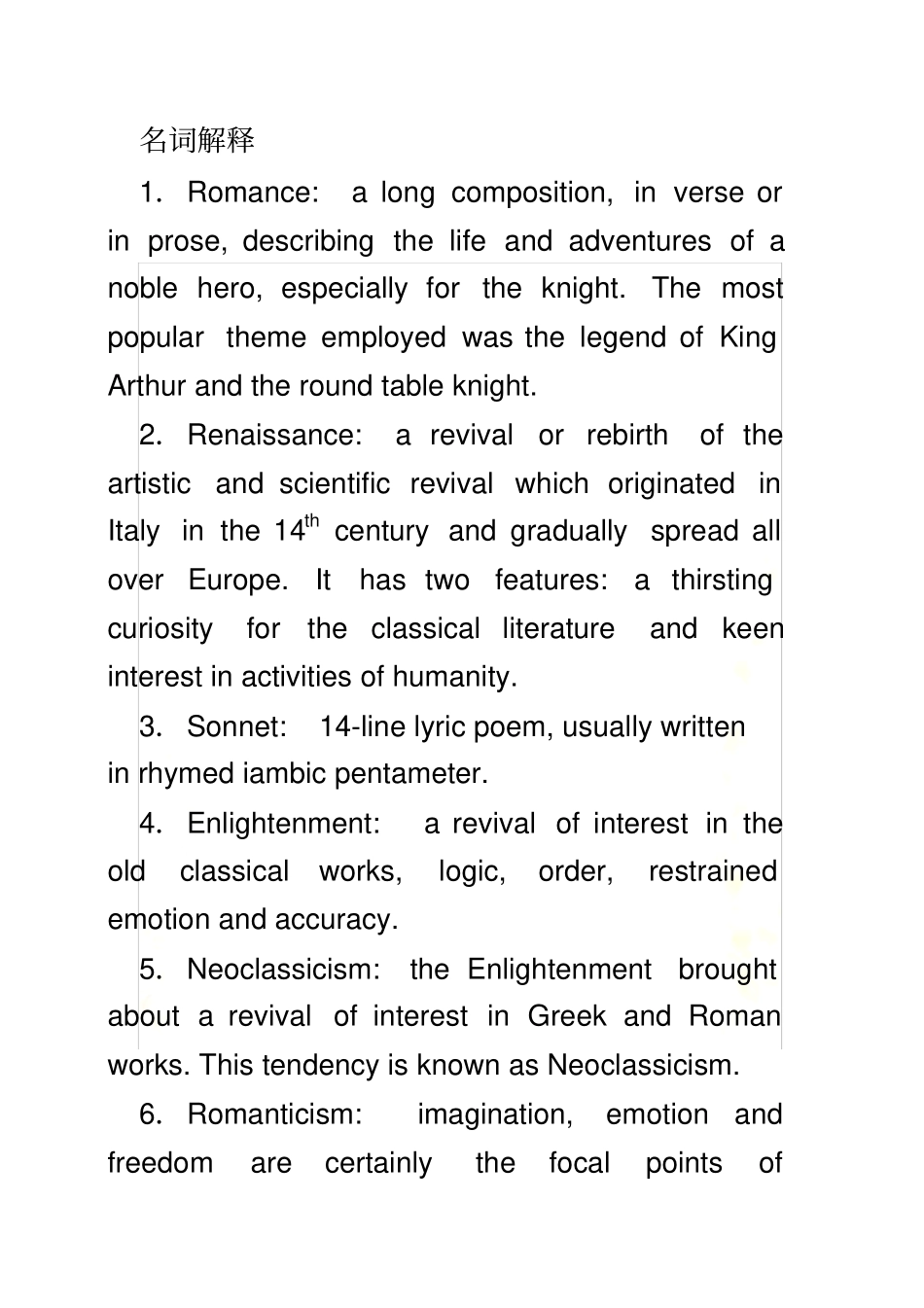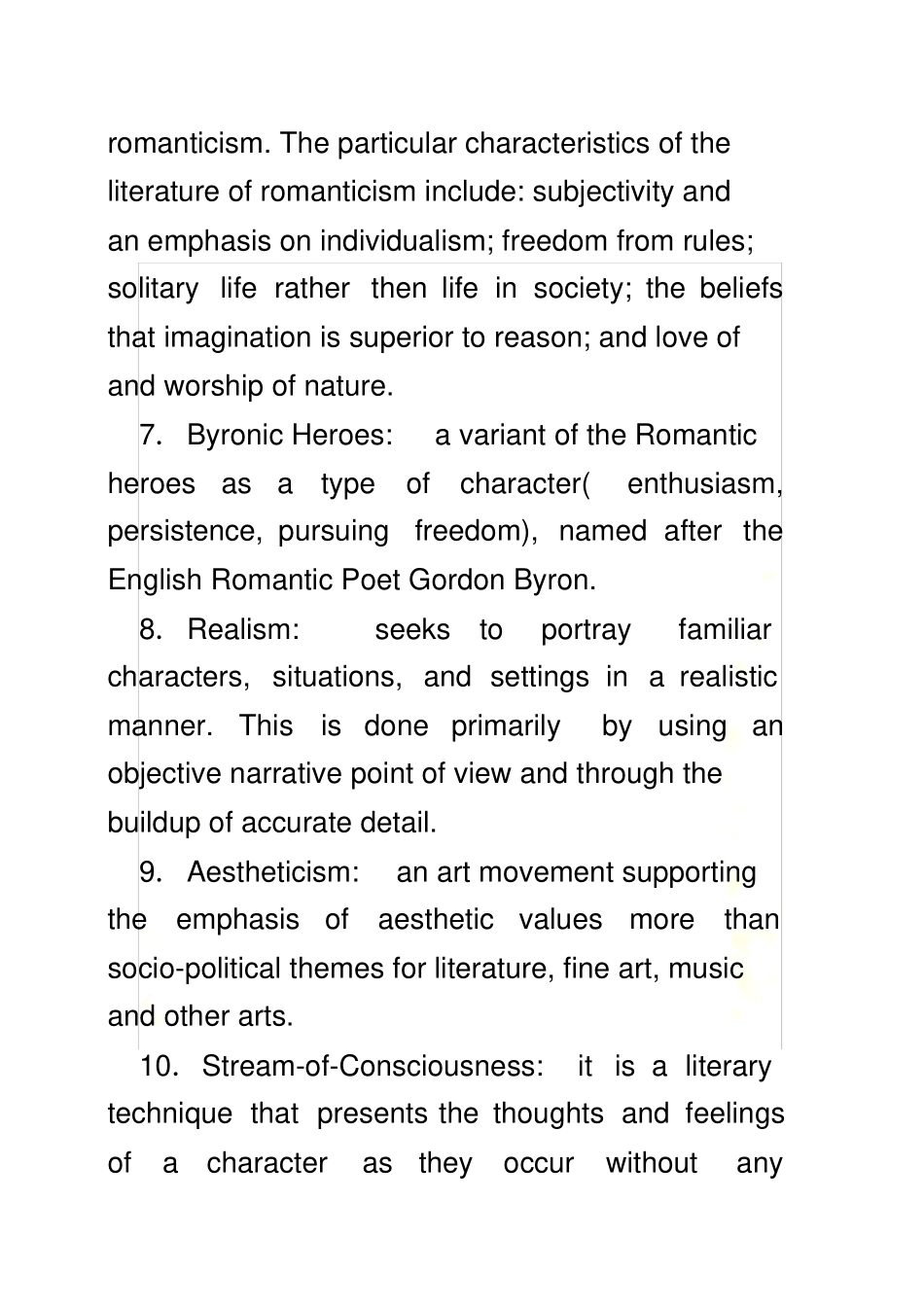英国文学史 - 名词解释名词解释1.Romance: a long composition, in verse or in prose, describing the life and adventures of a noble hero, especially for the knight. The most popular theme employed was the legend of King Arthur and the round table knight. 2.Renaissance: a revival or rebirth of the artistic and scientific revival which originated in Italy in the 14th century and gradually spread all over Europe. It has two features: a thirsting curiosity for the classical literature and keen interest in activities of humanity. 3.Sonnet: 14-line lyric poem, usually written in rhymed iambic pentameter. 4.Enlightenment: a revival of interest in the old classical works, logic, order, restrained emotion and accuracy. 5.Neoclassicism: the Enlightenment brought about a revival of interest in Greek and Roman works. This tendency is known as Neoclassicism. 6.Romanticism: imagination, emotion and freedom are certainly the focal points of romanticism. The particular characteristics of the literature of romanticism include: subjectivity and an emphasis on individualism; freedom from rules; solitary life rather then life in society; the beliefs that imagination is superior to reason; and love of and worship of nature. 7.Byronic Heroes: a variant of the Romantic heroes as a type of character( enthusiasm, persistence, pursuing freedom), named after the English Romantic Poet Gordon Byron. 8.Realism: seeks to portray familiar characters, situations, and settings in a realistic manner. This is done primarily by using an objective narrative point of view and through the buildup of accurate detail. 9.Aestheticism: an art movement supporting the emphasis of aesthetic values more than socio-political themes for literature, fine art...


